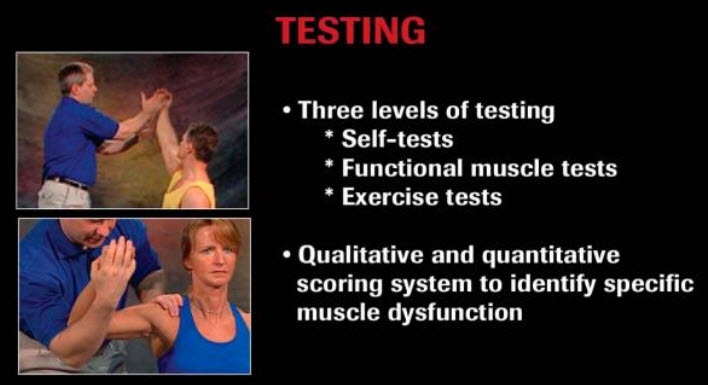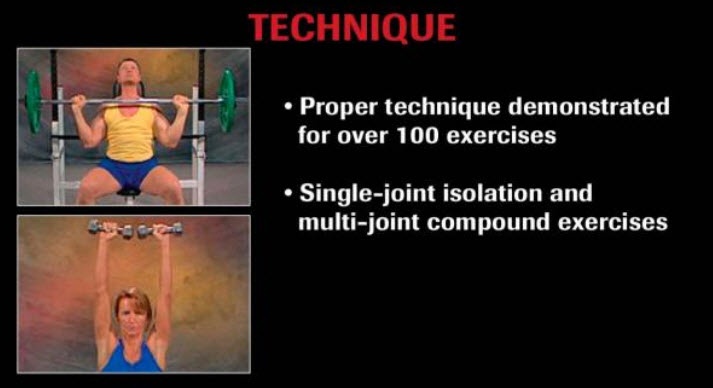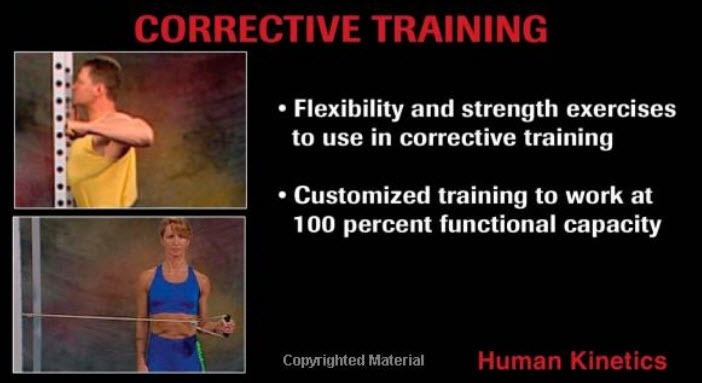Welcome to Optimal Muscle TrainingThis unique book and DVD and now online streaming video package presents the keys to optimizing muscle, joint, nerve, and biochemical functions and mastering the technical aspects of weight-training exercises. |
Already Have The Book?
Access Members Only section for all the videos that are on the DVD enclosed with the book. You will have access to online streaming videos and all the forms discussed in the book. Go to the bottom of page 123 to get the password for Free Access.
CLICK HERE FOR FREE MEMBERS ACCESSThree Levels of Testing
The enclosed DVD / Online Video walks you through 136 weight-training readiness tests of Self-Tests, Functional Muscle Tests, Exercise Tests.
The Self-Test contains several movements that test, without weights, your ability to move with proper technique through the full range of motion.
The Functional Muscle Test demonstrates how fitness professionals, therapists, and physicians can test their clients’ weight-training readiness and determine functional weaknesses. This is an excellent section for professional trainers to use for testing muscle performance in each exercise.
The Exercise Test presents strength-training exercises and reviews the optimal techniques for each. Then it describes and demonstrates common problems caused by weaknesses and dysfunctions in the muscles, joints, or nerves that are being trained.


Learn Proper Technique
The enclosed DVD / Online Video demonstrates proper technique for 33 weight-training exercises. You will see demonstrations of basic strength-training exercises and hear a narration that describes proper technique. You can use these techniques to improve your own training or you can use it with clients, team members, and friends.
Corrective Training
The Corrective Training sections guide you to supplementary flexibility, isometric, and tubing exercises using the muscles worked in the strength-training exercises for each body area. PNF exercises are also included for the chest, shoulders, and upper back.

Table Of Contents
Chapter 1
The Anatomy of Optimizing Strength
Four Types of Weight-Training Dysfunction
Causes of Weight-Training Dysfunction
Assessment of Weight-Training Function
Summary
Chapter 2
Assessing Weight-Training Readiness
Self-Test
Exercise Test
Functional Muscle Test
Treatment of Weight-Training Dysfunctions
Summary
Chapter 3
Linking Muscles to Exercise Movement
Deltoid Muscle
Rotator Cuff Muscles
Chest Muscles
Biceps Muscles
Triceps Muscle
Forearm Muscles
Upper-Back Muscles
Lower-Back and Hip Muscles
Quadriceps Femoris Muscles
Hamstring Muscles
Calf Muscles
Abdominal Muscles
Summary
Chapter 4
Analyzing the Risk-Benefit Ratio of Weight-Training Exercises
Risk-Benefit Coding System
Variables That Affect the Risk-Benefit Ratio
Risk-Benefit Ratio of Weight-Training Exercise Parameters
Summary
Chapter 5
Designing Training Programs for Optimal Strength
Program Design
Step 1: Weight-Training Readiness Screen
Step 2: Weight-Training Readiness Exam
Step 3: Determine Training Goals and Desired Outcomes
Step 4: Design a Functional Training Program
Step 5: Design an Optimal Training Program
Summary
Resources
Index
About the Author
Password To Access Members Only Section Of Website
If You Want To Access To The Videos and Forms
Click Below
